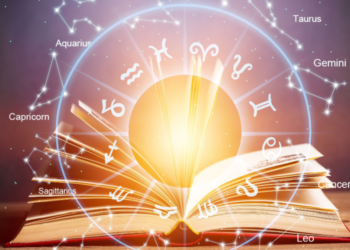Karma and Predestination in Vedic Astrology: The Cosmic Blueprint of Life
Introduction
Vedic Astrology, a profound science rooted in ancient Indian wisdom, offers a unique perspective on the concept of karma and predestination. This blog delves into the depth of karmic influence as depicted in Vedic astrology, exploring the different types of karma and their impact on human life.
The Depth of Karmic Influence
Karma in Vedic astrology transcends the simplistic notion of ’cause and effect’ from past life actions. It is an intricate tapestry woven from the choices and consequences spanning multiple lifetimes. This karmic baggage, carrying both positive and negative charges, manifests in our current life as various conditions, predispositions, and challenges.
For example, someone born into wealth might be experiencing the positive fruits of generous actions in a past life, while another person’s struggle with health issues could be the result of previous life choices affecting their physical well-being.
Understanding Sanchita, Prarabdha, and Kriyamana Karma
- Sanchita Karma (Stored Karma)
- Definition: Sanchita Karma represents the accumulated karma from all past lives, a vast storehouse of all actions and their results.
- Example: Think of it as a library of books, each book representing a past life. The collective wisdom and debts of these books shape your soul’s journey.
- Impact: While Sanchita Karma influences our overall life path, it remains in the background, setting the stage for current life experiences.
- Prarabdha Karma (Fruit-Bearing Karma)
- Definition: Prarabdha Karma is the portion of Sanchita Karma that is ripe for experiencing in the current life. It sets the framework of our life circumstances.
- Example: Consider Prarabdha Karma as the script of a play in which you are the actor. This script outlines the major events and experiences you will encounter, such as your family background, major life events, and inherent talents or challenges.
- Impact: This is the most directly experienced form of karma, shaping the key events and life situations you encounter. It is often seen as ‘fate’ or ‘destiny’.
- Kriyamana Karma (Current Action Karma)
- Definition: Kriyamana Karma is the karma being created through our current actions. It is dynamic and constantly evolving based on our everyday choices.
- Example: Imagine planting seeds in a garden. Each action is a seed that will grow and bear fruit in the future, either in this life or future lives.
- Impact: Kriyamana Karma is where the power of free will is most evident. Our current actions can mitigate or amplify the effects of Prarabdha Karma and add to Sanchita Karma.
The Interplay of Karma and Astrology
In Vedic astrology, the Janma Kundali or birth chart is a snapshot of the cosmic arrangement at the time of birth, providing clues to the individual’s Prarabdha Karma. The positions of planets and astrological houses reveal the nature of challenges and gifts one might encounter. For instance, a strong Saturn might indicate lessons in discipline and endurance, while a prominent Venus could point to themes around love and relationships.
Conclusion
Understanding the different types of karma in Vedic astrology offers a nuanced view of our life’s journey. While Prarabdha Karma sets the stage, our free will, exercised through Kriyamana Karma, allows us to navigate and shape our destiny. This knowledge empowers us to live more consciously, understanding that while certain aspects of our lives are predestined, our actions and choices play a pivotal role in our spiritual evolution and future incarnations. In the cosmic dance of life, karma and astrology guide us towards deeper self-awareness and fulfilment.
















